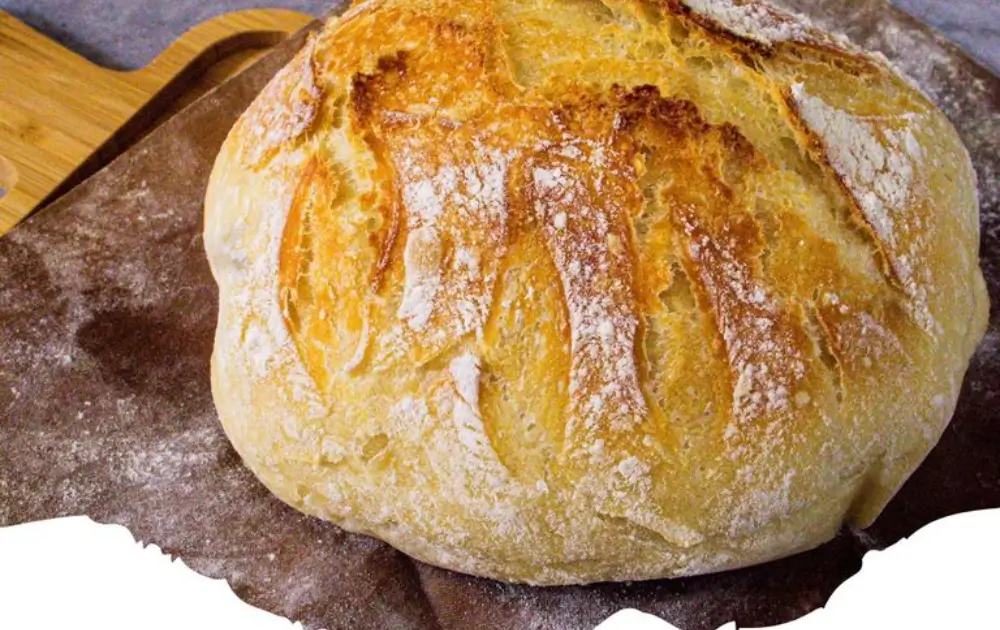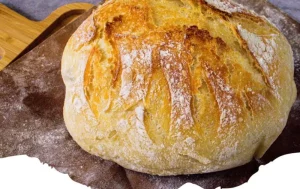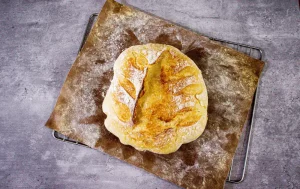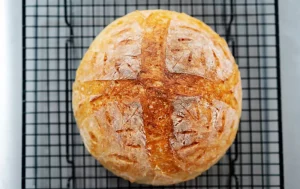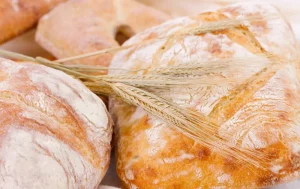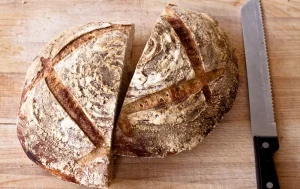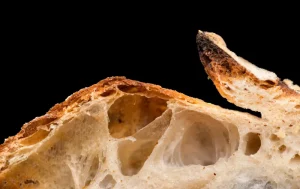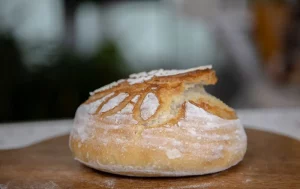Part 1: Introduction to Artisan Bread
Definition of artisan bread
Artisan bread, characterized by its handcrafted quality, natural ingredients, and traditional baking methods, stands out in the world of bakery goods. Unlike mass-produced bread, artisans bake these loaves in small batches, focusing on the art of fermentation and the development of complex flavors. This approach to bread-making dates back centuries, rooted in communities that valued the simplicity and wholesomeness of their food.
Brief history and resurgence in popularity
Over time, the industrial revolution introduced faster, more cost-effective baking processes, leading to a decline in traditional artisan methods. However, the late 20th century witnessed a significant resurgence in the popularity of artisan bread. This revival stems from a growing appreciation for culinary craftsmanship and a collective desire to return to more authentic, sustainable eating practices. Today, artisan bread symbolizes not only a commitment to quality and taste but also a connection to the past and a rejection of the one-size-fits-all approach to food production.
The Art of Making Artisan Bread
Key characteristics: crust, crumb, and flavor
The creation of artisan bread is a testament to the baker’s skill, emphasizing the key characteristics of crust, crumb, and flavor that distinguish these loaves. Firstly, the crust of artisan bread, often golden and crackling, serves as the bread’s protective shell and flavor enhancer. Its thickness and color vary based on baking techniques, directly influencing the bread’s overall texture and taste. Secondly, the crumb—the bread’s interior—showcases the baker’s ability to balance moisture and air. A well-made artisan loaf features a crumb that is both tender and aerated, with holes that speak to the dough’s proper fermentation and handling. Lastly, the flavor of artisan bread, which is deeply complex and satisfying, emerges from the quality of ingredients and the fermentation process, setting it apart from its commercial counterparts.
Ingredients and their importance
The importance of ingredients in artisan bread cannot be overstated. Bakers select high-quality, often local, ingredients to ensure each loaf’s flavor and nutritional value reach their full potential. Flour, water, salt, and yeast—the fundamental elements—play pivotal roles. Flour provides the structure, water hydrates the dough, salt adds flavor and regulates yeast activity, and yeast, whether commercial or natural, drives fermentation. The choice of flour, from whole wheat to rye, directly impacts the bread’s texture and taste, encouraging bakers to experiment with blends for unique results.
The role of fermentation
Fermentation stands at the heart of artisan breadmaking, a magical process where yeast and bacteria metabolize sugars to produce carbon dioxide and alcohol. This not only causes the dough to rise but also develops the bread’s flavor profile. The longer, slower fermentation typical of artisan bread allows for a depth of flavor and texture that quick-risen breads simply cannot match. Moreover, this process can make bread more digestible and its nutrients more accessible, highlighting fermentation’s crucial role in both the art and science of baking.
In conclusion, the art of making artisan bread is a deliberate and thoughtful process. From the selection of quality ingredients to the careful management of fermentation, each step is a reflection of the baker’s dedication to crafting something truly exceptional. This commitment to the fundamentals—crust, crumb, and flavor—ensures that each loaf is not just food but a work of art.
- For those interested in the health benefits and flavors of different grains, exploring recipes like Whole Wheat Bread can provide insights into how various ingredients impact the texture and taste of your loaves.
Artisan Bread vs. Commercial Bread
Differences in ingredients, process, and taste
Artisan bread and commercial bread stand apart in several key areas: ingredients, process, and taste, each reflecting a distinct approach to baking. Initially, artisan bread bakers select high-quality, often organic, ingredients, emphasizing natural flavors and nutritional value. In contrast, commercial bread often contains additives and preservatives to extend shelf life, sacrificing wholesomeness for convenience. Furthermore, the process of making artisan bread involves slow fermentation and meticulous handcrafting, which enhances flavor complexity and texture. Commercial bread production, however, relies on mechanization and speed, prioritizing efficiency over taste and texture.
Moreover, the taste of artisan bread, rich and nuanced, results from the baker’s attention to detail and the quality of ingredients used. Commercial bread, while consistent, lacks this depth of flavor, offering a more uniform and often blander eating experience. This distinction not only affects the sensory enjoyment of the bread but also its health benefits.
The health benefits of artisan bread
Artisan bread, particularly when made with whole grains and through natural fermentation, offers significant health advantages. The slow fermentation process reduces phytic acid levels, making nutrients more accessible and improving digestibility. Additionally, artisan breads often contain a higher fiber content, which is beneficial for digestive health. The absence of unnecessary additives and preservatives in artisan bread also means it’s a cleaner, more natural option for consumers seeking to minimize processed foods in their diet.
In essence, choosing artisan bread over commercial alternatives means opting for quality, flavor, and health benefits. The dedication to traditional baking methods and high-quality ingredients in artisan bread results in a product that not only tastes better but also offers a more nutritious option for consumers. This clear distinction underscores the value of artisan bread in a diet that prioritizes both health and taste.
Part 2: Baking and Beyond
Baking Techniques and Tips
• Sourdough starters and natural leavening
Diving into the world of artisan bread baking reveals a realm where tradition meets technique, especially when it comes to sourdough starters and natural leavening. Initially, a baker must cultivate a sourdough starter, a living culture of flour and water that ferments over time. This natural leavening agent not only raises the dough but also imparts a distinctive tangy flavor characteristic of artisan sourdough bread. The process demands patience and precision, as maintaining the right balance of yeast and bacteria is crucial for a vibrant starter. Moreover, natural leavening contributes to the nutritional profile of the bread, making it a healthier option.
• Kneading and shaping dough
Transitioning from starter to dough, kneading becomes the next critical step. Kneading, the act of folding and pressing the dough, develops gluten, which gives bread its structure and chew. Artisan bakers often prefer a gentle touch, using techniques like stretching and folding to strengthen the dough without overworking it. This method not only preserves the dough’s delicate structure but also encourages a more open crumb. Additionally, shaping the dough is an art in itself, requiring a deft hand to form loaves that are not only aesthetically pleasing but also bake evenly.
• Baking temperatures and times
Finally, mastering baking temperatures and times is essential for achieving the perfect artisan loaf. Each type of bread, from crusty baguettes to dense rye loaves, has its own ideal baking conditions. High temperatures are typically used to create a bold crust, while steam introduced at the beginning of baking helps the dough expand freely before the crust hardens. Understanding the nuances of your oven and the specific needs of your bread ensures that each loaf emerges golden and delicious. Moreover, timing is everything; even a few minutes can make the difference between an underbaked or overly dark crust.
In conclusion, the journey of baking artisan bread is filled with nuances, from nurturing a sourdough starter to kneading and shaping dough to finessing baking temperatures and times. Each step is pivotal, imbued with the baker’s skill and intuition. For those willing to embrace the process, the reward is bread that not only nourishes but also delights, embodying the essence of artisan baking.
- Artisan bread, with its versatile nature, pairs beautifully with a myriad of dishes. Imagine starting a meal with a slice of freshly baked bread alongside a hearty Potato Soup, or perhaps using it to scoop up a rich, flavorful Cowboy Queso Dip. The possibilities are endless, with each combination offering a new way to savor this timeless bread.
Varieties of Artisan Bread
• Sourdough, Ciabatta, Focaccia, and others
Artisan bread encompasses a wide array of varieties, each with its own unique characteristics and flavors. Among these, sourdough stands out for its tangy profile and chewy texture, a result of natural fermentation. Bakers around the world cherish sourdough for its simplicity and the depth of flavor it brings to the table. Following closely, ciabatta, an Italian bread known for its porous texture and crisp crust, offers a perfect canvas for sandwiches and bruschettas. Its high-hydration dough results in a light, airy loaf with large holes, making it a favorite for dipping in olive oil or hearty soups.
Focaccia, another Italian masterpiece, brings the rich flavors of olive oil and fresh herbs to the forefront. This flat, oven-baked bread serves as a versatile side, equally delicious when savored on its own or as a base for various toppings. Beyond these well-known varieties, artisan bakers also explore regional specialties, adding local flavors and ingredients to create bread that reflects the culinary heritage of their communities.
• Regional specialties
For instance, in France, the baguette, with its iconic slender shape and golden crust, epitomizes the French baking tradition. Meanwhile, in Germany, dense rye breads like pumpernickel offer a hearty, robust option that pairs well with strong cheeses and cold cuts. Each region’s climate, culture, and culinary preferences influence the types of bread that are developed and cherished.
Moreover, artisan bakers often experiment with ancient grains, seeds, and nuts to introduce new textures and nutritional profiles, further expanding the diversity of artisan bread available. This exploration not only enriches the bread-making tradition but also caters to a growing demand for wholesome, flavorful options.
In essence, the world of artisan bread is a testament to the creativity and skill of bakers who continue to honor traditional methods while embracing regional influences and innovations. From the crusty exterior of a French baguette to the soft, herb-infused crumb of Italian focaccia, artisan bread offers a rich tapestry of flavors that celebrate the art of baking.
FAQs
What makes bread “artisan”?
What distinguishes bread as “artisan” lies in its crafting process. Artisan bread, typically made by skilled bakers, emphasizes handcrafted techniques, quality ingredients, and often natural fermentation. Unlike mass-produced varieties, artisan loaves are shaped by hand and baked in small batches, allowing for unique textures and flavors. This dedication to traditional methods and attention to detail ensures each loaf is a work of culinary art.
Can I make artisan bread at home without professional equipment?
Turning to home baking, yes, you can indeed create artisan bread in your own kitchen without the need for professional equipment. The key lies in mastering a few basic techniques, such as proper kneading, fermentation, and understanding how to create steam in your oven to achieve that perfect crust. With practice, a simple Dutch oven or baking stone can help you replicate the environment of a professional bakery oven, producing loaves that are both beautiful and delicious.
How do I store artisan bread to maintain its quality?
To maintain the quality of artisan bread, proper storage is crucial. Avoid plastic bags, which can make the crust soggy. Instead, store bread in a bread box or wrap it in a cloth to keep it fresh. For longer storage, slicing and freezing the bread allows you to enjoy it as needed. Remember, artisan bread contains no preservatives, so enjoying it within a few days of baking captures its best flavor and texture.
LSI and NLP Keywords
- Sourdough, fermentation, crust, crumb, natural leavening, hydration, whole grains, gluten development, proofing, stone baking, organic ingredients, handcrafted, traditional baking methods, long fermentation, pre-ferments, baking stone, Dutch oven, scoring, artisanal bakery.
External Links
- King Arthur Baking – Techniques for the Artisan Baker: A Comprehensive Guide to Artisan Bread Baking Techniques.
- The Perfect Loaf – Beginner’s Sourdough Bread: Step-by-Step Guide for Baking Your First Sourdough Bread.
- Food and Agriculture Organization – The Importance of Bread: Understanding the Cultural and Nutritional Importance of Bread Worldwide.
This outline is designed to guide the creation of a detailed and engaging article on artisan bread, providing readers with a deep understanding of the topic, practical baking tips, and connections to further reading.
Conclusion
In conclusion, the world of artisan bread invites us into a realm where tradition, skill, and passion converge to create loaves that are not just food but expressions of artistry. From the tangy depth of sourdough to the airy lightness of ciabatta, each variety tells a story of cultural heritage and baking mastery. Embracing the artisan approach means valuing quality over convenience, flavor over speed, and craftsmanship over mass production.
Moreover, the journey into itbaking at home proves that with a bit of knowledge and practice, anyone can transform simple ingredients into exquisite, nourishing bread. Properly storing these loaves ensures that their unique textures and flavors can be savored to the fullest. Ultimately, artisan bread embodies a commitment to the joys of baking and eating well, enriching our meals and gatherings with its unmistakable presence. As we continue to explore and celebrate the diverse world of it, we not only keep ancient traditions alive but also contribute to a future where food remains a source of pleasure, community, and connection.
Print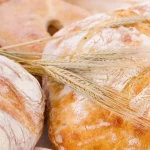
Artisan Bread
- Total Time: 1 hour
- Yield: 1 loaf 1x
- Diet: Vegetarian
Description
Artisan bread is a handcrafted loaf known for its crusty exterior, soft interior, and rich, complex flavors. Made with simple, natural ingredients, it embodies the essence of traditional baking.
Ingredients
- 4 cups all-purpose or bread flour
- 1½ cups warm water
- 1 teaspoon salt
- ½ teaspoon dry yeast
Instructions
- Mix the flour, yeast, and salt in a large bowl. Add water and stir until a shaggy dough forms.
- Cover and let the dough rest at room temperature for 12-18 hours for slow fermentation.
- Shape the dough into a ball and let it rest on a floured surface for 2 hours.
- Bake in a preheated Dutch oven at 450°F (232°C) for 30 minutes with the lid on, then remove the lid and bake for another 15-20 minutes.
Notes
- The long fermentation time develops the bread’s flavor and texture.
- Steam in the Dutch oven creates the artisan crust.
- Experiment with whole grains for added nutrition.
- Prep Time: 15 minutes
- Cook Time: 45 minutes
- Category: Bread
- Method: Baking
- Cuisine: Various
Nutrition
- Calories: 150 kcal
- Sugar: 0 g
- Sodium: 195 mg
- Fat: 0.5 g
- Carbohydrates: 31 g
- Fiber: 1 g
- Protein: 4 g

